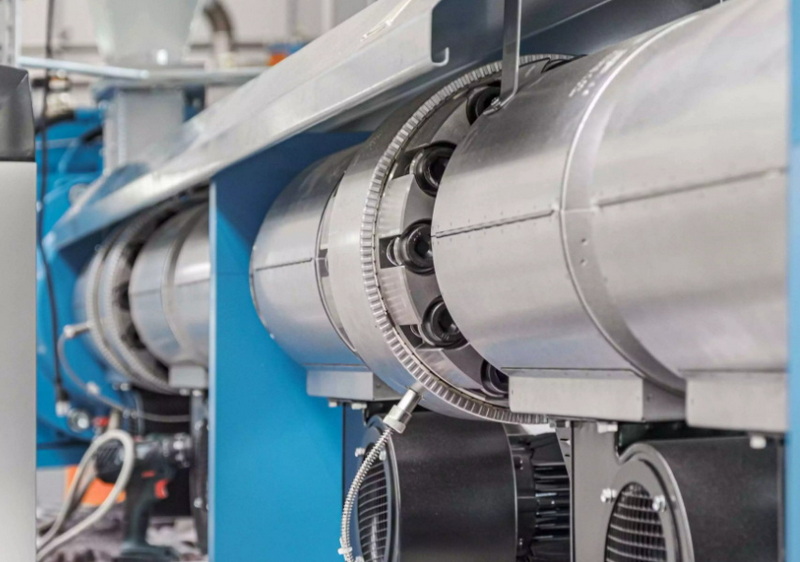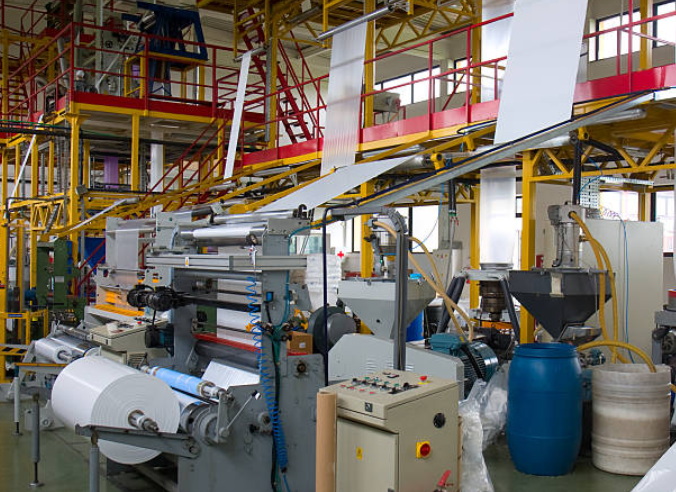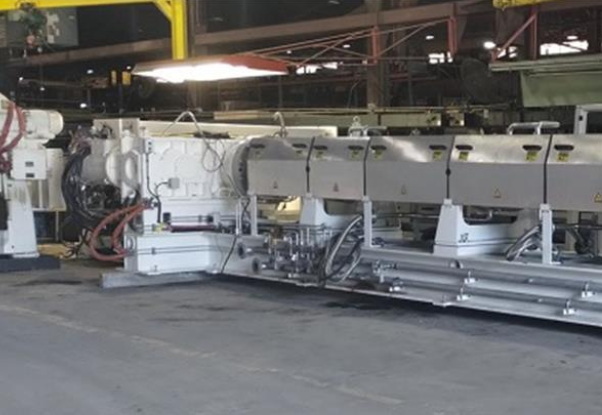Content Menu
● Understanding Used Sheet Extrusion Equipment
>> Why Buy Used Sheet Extrusion Equipment?
● Key Steps for Inspecting Used Sheet Extrusion Equipment
>> 1. Research the Manufacturer and Model
>> 2. Review Maintenance and Service Records
>> 3. Conduct a Visual Inspection
>>> Extruder Barrel and Screw
>>> Drive System and Motor
>>> Heating and Cooling Systems
>>> Control Panels and Electronics
>>> Roll Stack and Downstream Equipment
>> 4. Test the Equipment Under Power
>> 5. Assess Wear and Remaining Lifespan
>> 6. Evaluate the Control System
>> 7. Check for Versatility and Future-Proofing
>> 8. Consider Logistics and Installation
>> 9. Negotiate Price and Payment Terms
>> 10. Plan for Ongoing Maintenance
● Common Pitfalls to Avoid
● Conclusion
● FAQ
>> 1. What are the most critical components to inspect on used sheet extrusion equipment?
>> 2. How can I determine if the screw and barrel are excessively worn?
>> 3. Is it necessary to test used sheet extrusion equipment under power before buying?
>> 4. What should I look for in the control system of used sheet extrusion equipment?
>> 5. How do I estimate the value of used sheet extrusion equipment?
Purchasing used sheet extrusion equipment is a strategic move for manufacturers looking to expand capacity, diversify products, or optimize costs. However, the process of acquiring pre-owned machinery is complex and requires a careful, systematic inspection to avoid hidden costs, production issues, or safety hazards. This comprehensive guide walks you through every crucial step to ensure you make an informed, confident decision when investing in used sheet extrusion equipment.

Understanding Used Sheet Extrusion Equipment
Sheet extrusion equipment transforms raw plastic pellets or granules into continuous, flat sheets of precise thickness and width. These sheets serve as the foundation for countless products in packaging, automotive, construction, and consumer goods sectors. A typical sheet extrusion line consists of several interconnected components:
- Extruder: The heart of the system, where plastic is melted and homogenized.
- Feed System and Hopper: Where raw material is introduced and metered.
- Heating and Cooling Systems: Maintain precise temperature control throughout the process.
- Die and Calibrator: Shape and size the molten plastic into a flat sheet.
- Roll Stack (Chill Rolls): Cool and finish the sheet to the desired thickness and surface quality.
- Haul-Off and Cutting Units: Pull and cut the finished sheet to length.
- Control Systems: Oversee and adjust all process parameters for consistency and safety.
Why Buy Used Sheet Extrusion Equipment?
Choosing used sheet extrusion equipment offers several advantages:
- Cost Savings: Lower initial investment compared to new machinery.
- Reduced Lead Times: Faster acquisition and installation.
- Proven Reliability: Opportunity to acquire robust, time-tested models.
- Flexibility: Upgrade or expand production with less financial risk.
However, these benefits are only realized if the equipment is carefully inspected to ensure it meets your operational needs and quality standards.
Key Steps for Inspecting Used Sheet Extrusion Equipment
1. Research the Manufacturer and Model
Begin by investigating the reputation of the equipment's manufacturer and the specific model. A well-known brand with a history of reliability, innovation, and strong after-sales support is a positive indicator. Check for the availability of spare parts, technical support, and whether the model is still in production or widely used in the industry.
2. Review Maintenance and Service Records
Request comprehensive maintenance logs and service histories. Well-documented records suggest the equipment has been properly cared for and is less likely to harbor hidden issues. Look for evidence of:
- Regular lubrication and oil changes
- Scheduled inspections and preventive maintenance
- Timely repairs, part replacements, and upgrades
Consistent, professional maintenance is a strong predictor of ongoing reliability.
3. Conduct a Visual Inspection
A meticulous visual inspection is essential to identify signs of wear, damage, or neglect. Focus on these areas:
Extruder Barrel and Screw
- Inspect the barrel interior and screw flights for scoring, corrosion, or excessive wear.
- Measure the screw's outside diameter and the barrel's inside diameter at multiple points to assess wear.
- Check the leading edges of the screw flights for rounding, chipping, or deformation.
Drive System and Motor
- Look for oil leaks, unusual noises, or excessive vibration from the gearbox and motor housing.
- Examine belts, couplings, and bearings for signs of wear, misalignment, or looseness.
- Ensure all guards and safety covers are intact and properly secured.
Heating and Cooling Systems
- Inspect heating elements for discoloration, cracks, or loose connections.
- Check for leaks in the cooling circuits, and verify that hoses and fittings are secure.
- Confirm that temperature sensors and thermocouples are present and undamaged.
Control Panels and Electronics
- Look for signs of overheating, arcing, or burnt components in electrical panels.
- Test the functionality of safety devices, emergency stops, and interlocks.
- Verify that control interfaces are responsive and easy to operate.
Roll Stack and Downstream Equipment
- Examine roll surfaces for scratches, dents, or warping.
- Check bearings, shafts, and gearboxes for smooth, quiet operation and proper lubrication.
- Ensure adjustment mechanisms are functional and free from excessive play.

4. Test the Equipment Under Power
Whenever possible, observe the used sheet extrusion equipment in operation. This is the most reliable way to assess its true condition and performance. During the test run, pay attention to:
- Smooth and quiet operation of the extruder, roll stack, and downstream components
- Accurate and stable temperature control across all zones
- Consistent sheet thickness, width, and surface quality
- Proper function of safety systems and emergency stops
- Responsiveness of control systems and ability to make real-time adjustments
If a live demonstration is not possible, request recent video evidence of the equipment in operation or negotiate a conditional purchase agreement based on successful commissioning at your facility.
5. Assess Wear and Remaining Lifespan
All used sheet extrusion equipment will show some degree of wear. Quantifying this wear is essential for estimating the machine's remaining useful life and planning for future maintenance. Key indicators include:
- Screw and barrel wear: Excessive clearance reduces mixing efficiency and output.
- Motor and gearbox condition: Unusual noises, overheating, or oil leaks may signal impending failure.
- Roll stack wear: Surface imperfections can affect sheet quality and consistency.
Use appropriate measurement tools to compare current dimensions against original specifications. Significant deviations may indicate the need for refurbishment or replacement parts.
6. Evaluate the Control System
Modern control systems are essential for efficient, repeatable production. When inspecting used sheet extrusion equipment, ensure the controls offer:
- Real-time monitoring of temperature, pressure, and screw speed
- Programmable settings for different materials and product types
- Data logging and alarm functions for process optimization
- Intuitive, user-friendly interfaces
Obsolete or proprietary control systems may be difficult to support or upgrade, so factor this into your purchasing decision.
7. Check for Versatility and Future-Proofing
The best used sheet extrusion equipment provides flexibility for a variety of materials and products. Look for features such as:
- Adjustable die and roll stack settings for different sheet thicknesses and widths
- Quick-change components for rapid product changeovers
- Compatibility with a range of polymers and additives
Versatile equipment will provide a better return on investment and adapt to changing production needs.
8. Consider Logistics and Installation
Factor in the costs and logistics of dismantling, transporting, and reinstalling the used sheet extrusion equipment. Important considerations include:
- Availability of original manuals, wiring diagrams, and documentation
- Condition and completeness of all ancillary equipment (feeders, chillers, conveyors)
- Space and utility requirements at your facility
- Need for professional rigging and installation services
9. Negotiate Price and Payment Terms
The value of used sheet extrusion equipment depends on age, condition, brand, and market demand. As a general rule, expect to pay a fraction of the cost of a comparable new machine, with additional budget reserved for repairs, upgrades, and shipping.
Negotiate payment terms that protect your interests, such as:
- Payment upon successful inspection or commissioning
- Escrow arrangements for large transactions
- Warranties or guarantees where possible
10. Plan for Ongoing Maintenance
Once you acquire used sheet extrusion equipment, implement a rigorous maintenance schedule to maximize uptime and product quality. Key maintenance tasks include:
- Routine lubrication and oil changes
- Regular inspection and cleaning of screws, barrels, and dies
- Calibration and testing of control systems and sensors
- Replacement of worn or damaged components
A proactive approach to maintenance will extend the life of your investment and minimize unexpected downtime.
Common Pitfalls to Avoid
- Ignoring hidden wear: Even well-maintained machines can have concealed wear, especially in screws, barrels, and bearings.
- Overlooking obsolete controls: Outdated or unsupported control systems can limit productivity and complicate repairs.
- Underestimating installation costs: Dismantling, shipping, and recommissioning can add significant expenses.
- Failing to test under power: Always insist on a test run or recent operational evidence before finalizing a purchase.
- Skipping documentation: Missing manuals, diagrams, or software can hinder installation and troubleshooting.
Conclusion
Inspecting used sheet extrusion equipment before buying is a meticulous process that demands technical knowledge, attention to detail, and a methodical approach. By thoroughly researching the manufacturer, reviewing maintenance records, conducting detailed inspections, and testing the equipment under power, you can minimize risks and secure a high-value asset for your production line. Remember to factor in logistics, negotiate favorable terms, and plan for ongoing maintenance to ensure long-term success with your used sheet extrusion equipment.

FAQ
1. What are the most critical components to inspect on used sheet extrusion equipment?
The most critical components to inspect include the extruder screw and barrel for wear, the drive system and motor for leaks or unusual noises, the heating and cooling systems for proper function, and the control system for responsiveness and modernity. Downstream equipment such as the roll stack and cutting units should also be carefully examined.
2. How can I determine if the screw and barrel are excessively worn?
Measure the outside diameter of the screw and the inside diameter of the barrel at several points along their length. Compare these measurements to the original specifications. Significant deviations indicate wear, which can reduce output and product quality.
3. Is it necessary to test used sheet extrusion equipment under power before buying?
Yes, testing the equipment under power is highly recommended. A test run allows you to observe the machine's operation, identify potential issues, and verify that all systems function correctly. If a test run is not possible, request recent video evidence or a conditional purchase agreement.
4. What should I look for in the control system of used sheet extrusion equipment?
Look for control systems that offer real-time monitoring, programmable settings, data logging, alarm functions, and user-friendly interfaces. Avoid obsolete or proprietary systems that may be difficult to support or upgrade.
5. How do I estimate the value of used sheet extrusion equipment?
A common approach is to offer a fraction of the price of a comparable new machine, with additional budget for repairs and shipping. Factors such as age, condition, brand reputation, and included accessories will also influence the final price.






















